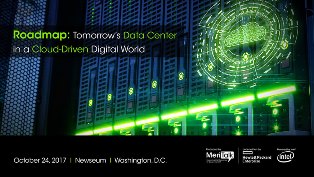
The White House American Technology Council (ATC) IT modernization report, released Aug. 30, emphasizes the need for updated IT infrastructure and shared services.
The ATC said that Federal agencies need to prioritize the modernization of high-value assets, modernize the Trusted Internet Connections and the National Cybersecurity Protection System (NCPS) Program to enable cloud migration, and consolidate acquisitions and management. In order to build a network of shared services, the ATC recommended that agencies adopt commercial cloud platforms, accelerate the adoption of cloud email and other collaboration tools, and improve and provide security shared services.

The ATC said that the Federal government should invest in two to three cloud platforms to support all of the agencies.
“Cloud is not a one-size-fits-all solution, and offers a multitude of options for agencies based on their needs and preferences,” the report said. “While it is important to ensure flexibility across the Federal Government, there are a few models that can cover the majority of Federal use cases. As such, the Government should invest in two to three cloud models to support the differing security and risk-tolerance postures of agencies.”
This report was written by representatives of the General Services Administration, Department of Homeland Security, the Office of Management and Budget, and the Department of Commerce.
“Our desire is to be as open to as many ideas as possible throughout the journey of Federal IT modernization, and this report is a key first step,” Chris Liddell, ATC director, and Jack Wilmer, senior policy adviser with the Office of Science and Technology Policy, said in a blog post. “We value innovative perspectives from industry, and are therefore opening up this report for industry and public comment to ensure that we have the best plan possible.”
The White House also wants to reduce wasteful spending on duplicative security capabilities, and decrease risk by improving situational awareness of managed external network connections to the Internet.
“We set out to accomplish two high-level objectives,” Liddell and Wilmer said. “First is to create a vision for the future of Federal IT that maximizes secure use of the best commercial technology available, and second is to define a plan to jump-start the government’s transition to that vision.”
The ATC want to “bring the cloud to the government” and “bring the government to the cloud,” by using both cloud infrastructure designed for consumers and cloud infrastructure designed specifically for the government.
The ATC also recommended establishing a joint Security Operations Center, which will provide visibility into the state of Federal IT networks and to secure those systems. The center would continue to enable the Continuous Diagnostics and Mitigation (CDM) and improve upon it to include security practices for cloud-based services rather than focusing on on-premise data centers.
“Much of this plan is built on industry best practices, and a major point of emphasis is to maximize use of commercial capabilities,” Liddell and Wilmer said. “This will result in a close partnership with industry to be able to achieve our targeted vision. Given this, we are collectively looking for feedback from industry to ensure that we have adequately described our end-state and that we are best leveraging industry capabilities in our plan to get there.”
